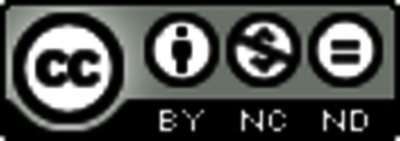Paiva Acuña, Fátima Johana (2013) Control interno y su incidencia en la rentabilidad de empresa cobros del norte S.A. Revista Cientifica de FAREM-Esteli, 2 (7). pp. 34-42. ISSN 2305-5790
![[img]](http://repositorio.unan.edu.ni/5910/1.hassmallThumbnailVersion/cover_issue_22_es_ES.png)
|
Image (Portada)
cover_issue_22_es_ES.png Download (63kB) | Preview |
|
![[img]](http://repositorio.unan.edu.ni/5910/2.hassmallThumbnailVersion/88x31_cc.png)
|
Image
88x31_cc.png Available under License Creative Commons Attribution Non-commercial No Derivatives. Download (1kB) | Preview |
|
|
Text (Texto Completo)
99-371-1-PB.pdf Download (383kB) | Preview |
Resumen
Esta investigación se evalúa en control interno y su incidencia en la rentabilidad de la Empresa Cobros del Norte S. A En el Periodo 2011 y aportar recomendaciones con las cuales pueden mejorar. El tipo de estudio es descriptivo y de corte transversal porque se está evaluando un periodo siendo este el 2011. El enfoque es cualitativo con técnicas cuantitativas y cualitativas. Se aplicaron entrevistas y encuestas, se reforzó con investigación documental para confirmar la veracidad de la información brindada. La investigación se elaboró en base a los componentes del modelo COSO I y la rentabilidad se basa en el análisis Costo-Beneficio. Según la problemática encontrada se corrobora que el control interno es deficiente analizando las grandes debilidades encontradas durante el proceso empezando desde el ambiente de control de la empresa, siendo uno de los principales problemas la mala segregación de funciones y la falta de información financiera a tiempo. Se recomienda tomar medidas correctivas para solucionar las debilidades, en primer lugar la elaboración de un manual de procedimientos, un manual de funciones donde se establezcan las líneas de autoridad y responsabilidad, y la supervisión constante del proceso de compras. Palabras claves: control interno, rentabilidad, Elementos del COSO, Costo-Beneficio ABSTRACT This research evaluates internal control and its impact on the profitability of the Company Collections North S. A In the period 2011 and provide recommendations that can improve. The type of study is descriptive and cross-sectional because it is evaluating a period 2011. El being the qualitative approach is quantitative and qualitative techniques because interviews are done analytically which are processed according to the assessment of the functioning of control internal surveys and processed quantitatively represented in percentages according to the sample, was reinforced with documentary research to confirm the accuracy of the information provided. Specifically the investigation is prepared using the components of the COSO model I, and profitability is based on cost-benefit analysis. According to the problems encountered is confirmed that the internal control is deficient analyzing the great weaknesses found during the process starting from the control environment of the company, one of the main problems of poor segregation of duties, and lack of timely financial information is recommended to take remedial action to address the weaknesses found, first developing a procedures manual, a manual functions where established lines of authority and responsibility, and to perform continuous monitoring of the procurement process Keywords: internal control, profitability, Elements of COSO, Cost-Benefit
| Item Type: | Article |
|---|---|
| Palabras Clave Informales: | control interno, rentabilidad, Elementos del COSO, Costo-Beneficio |
| Materias: | 300 Ciencias sociales > 330 Economía |
| Divisiones: | CENTRO UNIVERSITARIO REGIONAL DE ESTELÍ > Revista Científica > La Revista Científica de la FAREM-Estelí: Medio Ambiente, Tecnología y Desarrollo Humano > Vol.2, Núm. 7 (2013) |
| Depositing User: | Editor Datos |
| Date Deposited: | 11 Oct 2017 03:52 |
| Last Modified: | 11 Oct 2017 03:52 |
| URI: | http://repositorio.unan.edu.ni/id/eprint/5910 |
Downloads
Downloads per month over past year
Actions (login required)
 |
View Item |





 CORE (COnnecting REpositories)
CORE (COnnecting REpositories) CORE (COnnecting REpositories)
CORE (COnnecting REpositories)